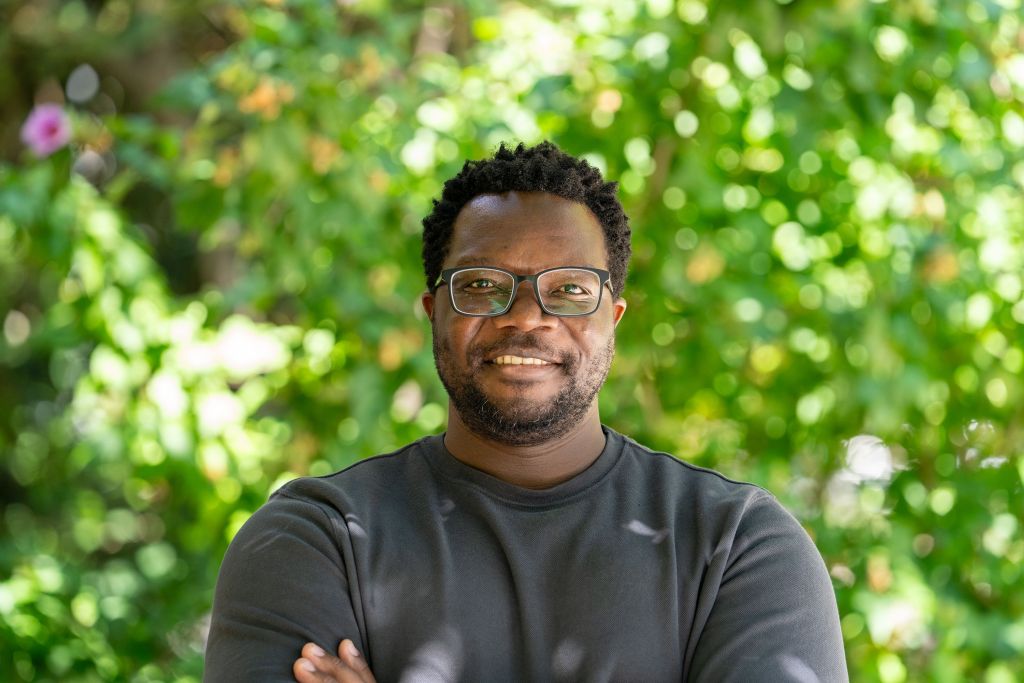Unlocking Africa’s wildlife economies
When Edwin Tambara talks about wildlife economies, he starts with a simple lament: most people don’t know what they are even though they made use of them for centuries.
Tambara is the Director of Global Leadership at the African Wildlife Foundation and winner of the Financial Times Sustainable Futures Award, and will be presenting a talk, titled “Nature Works: Turning Africa’s Wild Side into Wealth” at the Oppenheimer Research Conference in Midrand next month (October). He emphasises, in a Zoom interview, that
“from the wild foods we gather, to the medicines, materials, and cultural traditions and services rooted in nature, wildlife economies shape daily life far more than we realise. They are not some abstract concept, they are the quiet engine behind nutrition, livelihoods, and resilience and an avenue for rural economic growth and development.”.
Tambara stresses that the problem is not their absence, but their invisibility. “Wildlife economies are often overlooked in national statistics, ignored in policy, and undervalued in global markets. Yet without them, millions would lose a safety net that provides food security and income. Making these economies visible—showing who participates, how value flows, and how benefits can be shared more fairly—is the first step toward unlocking their full potential.”
He says that “policymakers are very open once you start the conversation, but what we mostly pick up is that they have limited understanding of what wildlife economies entail. There’s hesitancy to engage, but rarely full-on resistance. Once you explain it, they realise in many ways it’s already happening.”
Tambara emphasises that Africa’s biodiversity is both a natural heritage and an economic resource, with the potential to drive sustainable development through “biodiversity economies” if we stop treating it as either a luxury or a livelihood.
The vision beyond ecotourism, says Tambara, includes forestry, fisheries, non-timber forest products (NTFPs), payments for ecosystem services, and nature credits with carbon credits the most common, all of which can create jobs, reduce poverty, incentivise conservation and build resilience in a changing climate.
Wildlife economies go far beyond the preservation of pristine wilderness. In Africa, one of the greatest untapped opportunities lies in the massive task of restoring degraded lands and ecosystems. This side of the wildlife economy is not only about healing nature, it is also a powerful driver of jobs, new enterprises, and local livelihoods. As countries confront the urgent challenge of land degradation, investing in restoration opens a pathway to unlock economic potential while securing ecological resilience for future generations. The idea itself isn’t new. “In most African countries, we’ve been practising aspects of wildlife economies in one way or another,” Tambara says. “But what’s emerging now is the need for a more comprehensive approach, moving from isolated activities to recognising wildlife economies as a key economic sector.”
For many governments, the concept still begins and ends with tourism. “The number one thing they associate the wildlife economy with is tourism, especially ecotourism. But our journey has been to show that it’s much bigger than that. It goes beyond tourism.”
COVID-19 drove that point home. “When travel stopped, we were forced to ask: beyond tourism, how are we going to generate revenues from biodiversity and wildlife? It quickly became obvious that we needed to look at the wider contributions of ecosystems to our economies.”

The obstacle is data. “One of the major gaps is availability of information. What exactly does the wildlife economy look like in a country or in a particular landscape? In most contexts, you only find reasonable information on tourism. But what else does it look like?”
Isolated successes exist — community projects, small enterprises, local industries — but they don’t add up to a national picture. “Trying to get a complete picture is very difficult. How much are people utilising from nature? How much is being commercialised? Who is generating revenue and jobs? Those questions remain unanswered in most countries.”
In Zimbabwe, the finance and environment ministries have been confronted with these sorts of questions. “When it comes to budgets finance wants to understand the return on investment. They had tourism receipts, but nothing beyond that. So we partnered with them to assess the biodiversity economy as a whole.”
That exercise revealed hidden value chains, from forestry and fisheries to non-timber forest products like wild fruits including nature based export products. “Baobab is a good example,” Tambara says. “Women harvest it, processing centres that have been setup in districts such as Hwange prepare it, and even national companies buy it to make juice. Everyone along the chain earns income. That’s a wildlife product driving livelihoods.”
But baobab is just one fruit among hundreds. “We don’t yet have a concrete picture of how much is being extracted or commercialised. But even our baseline estimates show the potential is huge. These nature-based foods— from wild, uncultivated plants and animals—are an essential but often overlooked part of our diets. They provide vital nutrients and help keep our food systems diverse and resilient. Yet, we have only just begun to understand how much these foods contribute to our health and nutrition,” he says.
If we tried to replace what nature gives us with large-scale farming, it would mean massive land conversion and environmental costs. In other words, ecosystems are quietly subsidising our food systems every day. The real question is: how much would it cost us if these natural sources were degraded or lost altogether?”
Two examples serve to prove this observation: In Rwanda, the community-owned Sabyinyo Silverback Lodge and a national Tourism Revenue Sharing Programme have linked gorilla conservation to local benefits and national GDP, making biodiversity central to development. In Zimbabwe, the Biodiversity Economy (ZBE) report highlighted nature’s economic value, from wildlife tourism — which made up 70% of tourism receipts in 2019 — to untapped potential in NTFPs like the ilala palm, now supporting local entrepreneurs. Together, these cases show how countries can align conservation with prosperity by treating biodiversity as a structured economic sector, ensuring ecosystems and communities thrive together.
Governance is the key to unlocking that potential. “You can’t just go into an area and harvest. For the most part in Southern Africa, in Zimbabwe, Zambia, Mozambique, Botswana, policies around user rights provide direction and structures to decide who has rights to what.”
“South Africa probably goes even further with clear devolved rights over wildlife for private landowners and in some cases rural communities. That’s the best model for wildlife economies to thrive,” says Tambara. In other countries such as Namibia and Kenya community conservancies have provided these structures allowing communities to engage in an array of wildlife economy activities.
“Just as important as protecting nature is tracking how it’s used,” says Tambara. “We need strong monitoring systems at every level to make sure harvesting is truly sustainable, guided by science and real-time ecological data. But monitoring can’t stop at nature, it must also follow the flow of value: who is using these resources, and who is actually benefiting. Only then can we build a fair wildlife economy, where local communities—who are the real custodians of these resources—gain a rightful share of the benefits. Without this, we run the risk of the trappings of over-commercialisation and sustainability will always be out of reach. At our disposal is the ever advancing technology that can be applied to support this work.”
Where such structures and systems are absent, overexploitation follows. “In the carbon space, people have flown into areas, promised communities much, sold credits, and then disputes arise over benefit sharing. Without national policy frameworks or governance systems, projects operate in a vacuum, and that’s when things get messy.”
Tambara is energised by the momentum building on past efforts that laid valuable lessons for growing wildlife economies. “Across the continent, partnerships are coming together, governments, communities, and the private sector aligning to drive this agenda. New tools, innovative approaches, and communities of practice are emerging, signaling a strong foundation for scale.”
He says African institutions such as AWF are championing delivery at both national and landscape levels, while leading academic centres like the African Leadership University’s School of Wildlife Conservation and the African Wildlife Economy Institute are strengthening the evidence base through research and documentation. At the same time, multilateral agencies including the Global Environment Facility and the World Bank are taking notice, beginning to embed wildlife economies in their country programmes”.
Some countries are further along, says Tambara. “South Africa has really seen the potential of the wildlife economy. They’ve established a national strategy, investment products, and even a biodiversity investment portal that shows real, on-the-ground opportunities. That’s something you don’t see elsewhere. In mining, you can quickly find a prospectus of resources. For biodiversity, that’s rare. South Africa is beginning to change that.”
“They’ve also developed investment products to help facilitate investment flows into the wildlife economy sector. And one of the admirable things they have done is create this biodiversity investment portal. A handicap in this space is that you might have the enabling policies and everything, but the question is: what is the pipeline of ready-to-invest opportunities around wildlife economies? That’s one of the major challenges. Whether investors or development partners want to support work in this area, they often struggle because in most countries there is no place where you can actually find a prospectus or investment blueprint that outlines, when looking at the biodiversity economy sector, what the opportunities are.
Tambara believes wildlife economies must be treated like other economic sector such as agriculture or mining, with bespoke strategies, policies, and investment blueprints. “When you tease out the details, the figures are staggering. You become surprised why we are not treating this as a serious economic sector that Africa can build on.”
The way forward, he says, is evidence and an enabling policy and business environment for investment and scale. “It’s going to take data that is well analysed and readily accessible to drive policy decisions. It’s going to take investment blueprints to channel capital into value chains and real opportunities. And at the landscape level, we have to ensure stakeholders are ready with a pipeline of ready to invest opportunities that promote sustainability. Otherwise, wildlife economies could degrade the very resources they depend on.”
The opportunity is immense, Tambara insists, for biodiversity economies to diversify African economies and provide long-term security. “We have to act on the appetite that exists. We have to build the evidence base. And we have to support countries in developing wildlife economies that are holistic, sustainable, and recognised for what they are: a pillar of Africa’s future.”
If Africa can mine gold and drill oil with billion-dollar strategies, why not do the same for its greatest resource: nature? Our biodiversity is an asset that can be grown, if we wisely conserve and sustainably utilise. Wildlife economies aren’t a side hustle to tourism. The question isn’t whether the value is there, says Tambara. It’s whether governments and investors are ready to see the wild as wealth, and act on it.
Edwin Tambara will be presenting a talk, titled “Nature Works: Turning Africa’s Wild Side into Wealth” at the 14th Oppenheimer Research Conference which takes place in Midrand in Johannesburg from 15th – 17th October.
Author
- Research tackles the tensions between nature and necessity - October 1, 2025
- Unlocking Africa’s wildlife economies - September 19, 2025
- The Hidden Carbon Power of South Africa’s Burned Grassland - September 5, 2025


